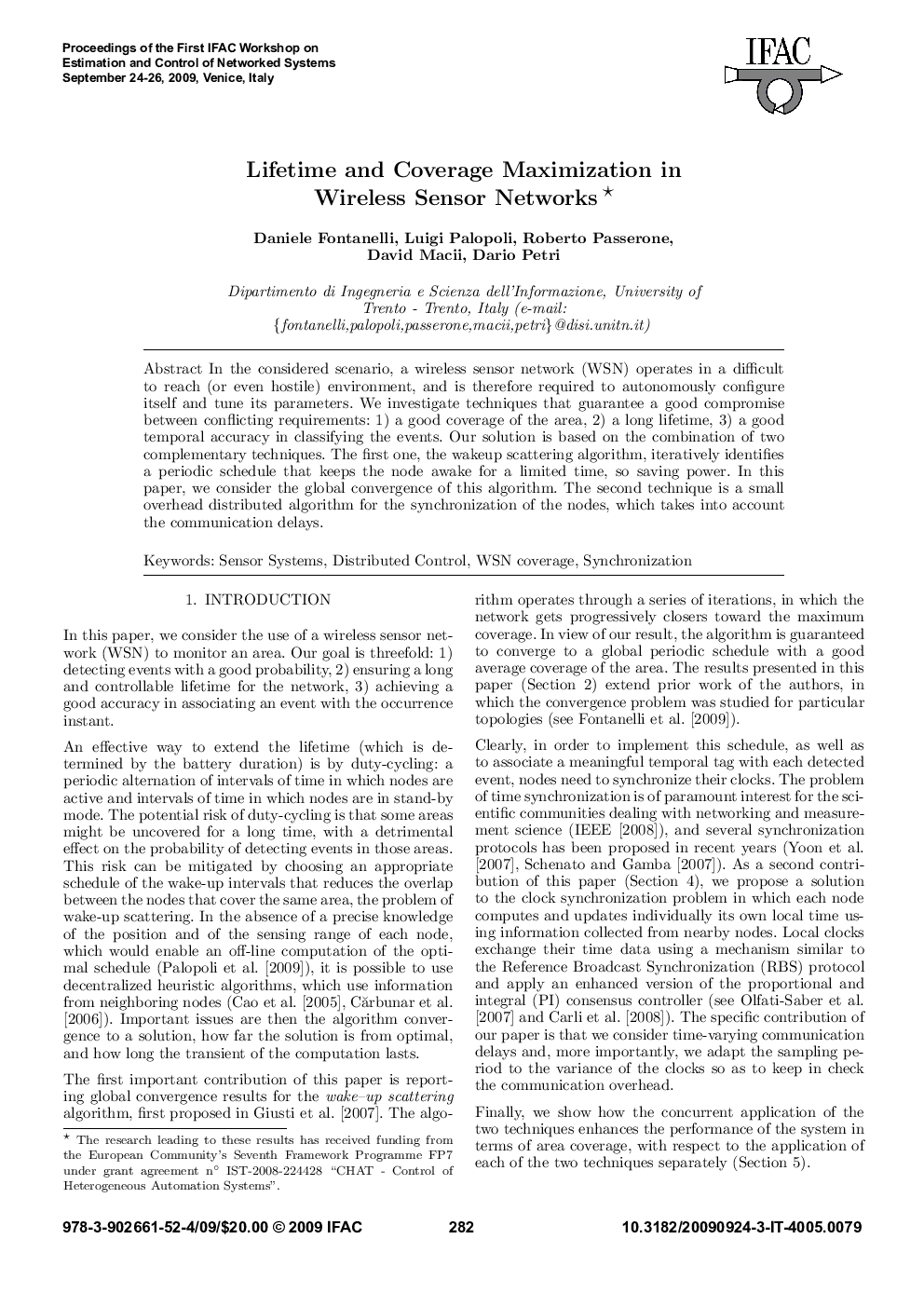| کد مقاله | کد نشریه | سال انتشار | مقاله انگلیسی | نسخه تمام متن |
|---|---|---|---|---|
| 717865 | 892250 | 2009 | 6 صفحه PDF | دانلود رایگان |

In the considered scenario, a wireless sensor network (WSN) operates in a difficult to reach (or even hostile) environment, and is therefore required to autonomously configure itself and tune its parameters. We investigate techniques that guarantee a good compromise between conflicting requirements: 1) a good coverage of the area, 2) a long lifetime, 3) a good temporal accuracy in classifying the events. Our solution is based on the combination of two complementary techniques. The first one, the wakeup scattering algorithm, iteratively identifies a periodic schedule that keeps the node awake for a limited time, so saving power. In this paper, we consider the global convergence of this algorithm. The second technique is a small overhead distributed algorithm for the synchronization of the nodes, which takes into account the communication delays.
Journal: IFAC Proceedings Volumes - Volume 42, Issue 20, September 2009, Pages 282-287